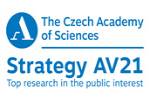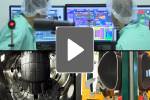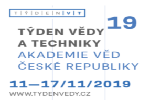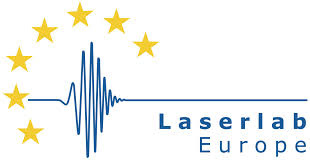Main research topics in the Tokamak department are steered towards basic challenges of physics and technology linked to the construction and operation of the international experimental reactor ITER and future fusion reactors. The research is pursued on experimental facilities in Europe and worldwide (in particular, on tokamaks JET, ASDEX-Upgrade, MAST, NSTX and on stellarators TJ-II and VEGA) and, most importantly, on the in-house facility tokamak COMPASS that replaced tokamak CASTOR in 2007. Operation of tokamak COMPASS in Prague started in 2009 and the full scientific exploitation began in 2012.
At present, work of the Tokamak department covers the following basic areas:
1. Tokamak COMPASS enhancement
- Magnetic perturbation system for ELM control
- Vertical kicks systems for ELM control
- Fast feedback for vertical plasma stabilization optimisation
- Operation with Internal transport barriers
- High Greenwald fraction scenario development
- Charge-Exchange Recombination Spectroscopy system
- Fast divertor thermography system
- Tomography of visible and X-ray radiation and reconstruction of fast bolometric measurements
- Edge Microwave reflectometry for fast measurements of density in the pedestal region
- Neutral particle analysers for ion temperature measurement
- Gas-puff imaging system for turbulence studies
- Enhancement of Thomson scattering (TS) for temperature and density measurements with high spatial resolution
- Beam emission spectroscopy (BES) for density profile and plasma rotation measurements
- Atomic Beam probe for edge current measurement
2. Studies of edge plasmas at COMPASS and other devices
- Studies of the plasma transition to the high confinement mode (H-mode) and generation of the transport barrier at COMPASS
- Studies of the COMPASS H-mode pedestal properties in comparison to other facilities
- Modelling of the ELM suppression by resonant magnetic perturbation for tokamaks ITER, MAST and COMPASS
- Disruption studies on COMPASS
- Experimental study of runaway electrons on COMPASS
- Modelling of interactions between the runaway electrons and the resonant magnetic perturbations
- Modelling of the ion diffusion in systems with magnetic islands and turbulent structures
- Modelling of power fluxes onto divertor components in tokamak ITER, optimisation of the components
- Theoretical and experimental studies of electrostatic and magnetic turbulences
3. Development of advanced diagnostic methods
- Advanced electrostatic and magnetic probes for measurements of plasma edge parameters (ion temperature, plasma potential) at different facilities
- Spectroscopic diagnostic tools in order to measure current profile in the edge plasma, plasma rotation etc.
- Numerical modelling of probe characteristics in edge plasmas
- Irradiation tests of the advanced magnetic probes (Hall sensors, etc.)
4. Plasma-wave interactions
- Theoretic and experimental studies of conversion of electron Bernstein waves to extraordinary wave in the higher hybrid resonance area
- Studies of generation of fast electrons in front of the Lower Hybrid antenna and of the corresponding induced changes of density and fluxes in the edge plasma
- Modelling of the influence of random fields to the increase of production rate of fast particles










